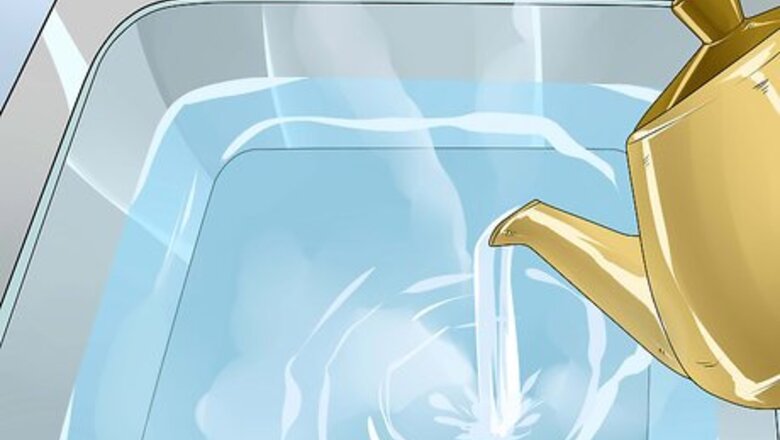
views
X
Research source
Bathing Your Baby
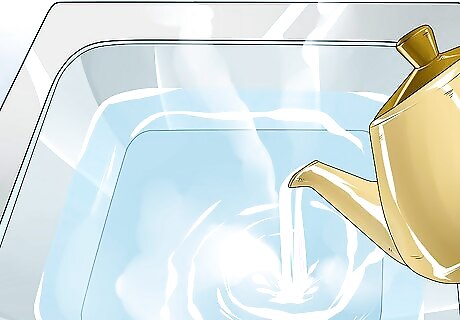
Fill the bath a few inches deep. Fill a safe, clean receptacle with roughly three inches of warm water. The water should be between 90 °F (32 °C) and 100 °F (38 °C). Once you have the appropriate amount of water, shut it off and swirl the water to ensure there are no especially hot spots. Touch the water with the inside of your wrist. The sensitivity of your wrist is a more trustworthy temperature indicator than your hand. The water should feel warm, not hot. Never add water to the tub with your baby in it. The water can quickly become dangerously hot. You may want to set your water heater to 120 °F (49 °C). This will still allow you to get hot water, but will prevent potentially scalding water from collecting in the water heater.

Keep your baby secure. Wet babies are especially hard to hold. To prevent your grip from slipping, place your baby along one of your arms. Make sure the baby’s head, neck, and back are supported. Always use one of your arms to support them while you bathe them with your other arm.

Clean the baby’s face with clean cotton. Start by cleaning your baby's face with disposable cotton pads or a freshly laundered and rinsed cotton cloth. Wipe from the inside corner of one the baby’s eye outwards. Repeat the process on the other side. Don’t rub or push too hard. Dab softly but repeatedly if necessary. Next, wipe the rest of baby’s face, from the middle outwards. Make sure you clean around their nose and mouth, behind their ears, and in the creases of their neck. Do not put anything inside your baby’s ears, nose or mouth. Periodically pour cups of warm water over your baby’s body to keep them from getting too cold.
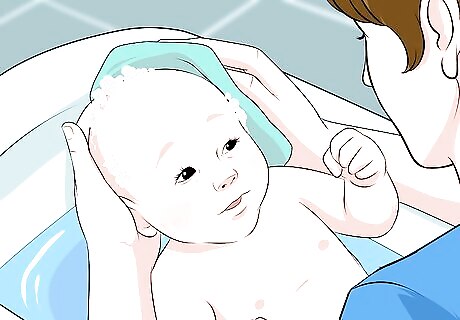
Wash the baby top to bottom. After washing their face, wash the rest of the baby top to bottom and front to back. A soapy washcloth cloth is best. Use only cleansers meant to be used on babies. These will be very mild, and will minimize irritation. Do not use regular soap or shampoo to bathe your baby. Some very mild soaps may also be appropriate for use on babies. Ask your pediatrician if the cleanser you have is ok for babies. Avoid getting any type of cleanser in your baby’s eyes or mouth.
Wash the baby's hair. Wet the baby's hair and massage in a small portion of baby shampoo in a circular motion. Then rinse with your hands or a cup of warm bathwater.

Wash the baby’s groin and bottom last. For both baby girls and boys, wash the diaper area from front to back. Be especially gentle when washing a baby’s genitals, but make sure they are cleaned. Soaps can irritate this sensitive area so just using warm water is best. Do not pull back the foreskin on an uncircumcised boy. Don’t forget a final rinse of your baby’s full body. Use several cups of warm, clean water.
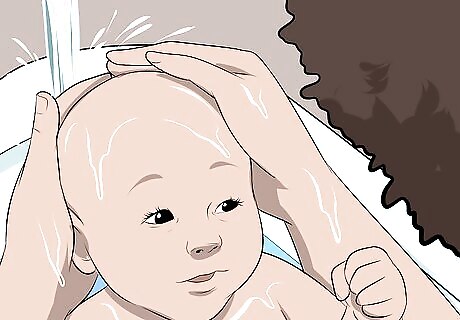
Lift your baby carefully. Use one of your arms to support your baby’s head and neck. Reach beneath the baby’s bottom, and wrap your fingers around one of their legs. Use this arm to support the baby’s weight as your lift them slowly. If possible, have another adult take the baby from you in a clean, dry towel.

Dry your baby diligently. Always use a clean, dry towel to dry your baby. Make sure you dry them well, as moisture on your baby’s skin can cause a rash or other irritation. Pat instead of rubbing with the towel. Be sure to get inside of all of your baby’s creases!
Ensuring Your Baby’s Safety
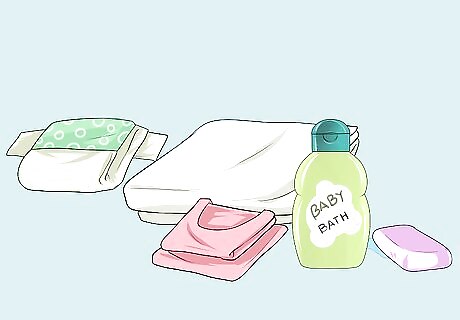
Collect supplies beforehand. Make sure you have everything you need before bathing your baby. This will ensure you don’t have to risk making you baby cold by bringing them to get something in another room. You’ll need a clean washcloth, baby soap, a clean cup, a clean, dry towel, a fresh diaper, and clean dry clothes. Further, make sure the room is warm enough to prevent your baby from feeling chilly. Sponge bathe your newborn. Until your baby’s umbilical stump falls off and the bellybutton heals, do not submerge them in water. Instead, give them sponge baths.
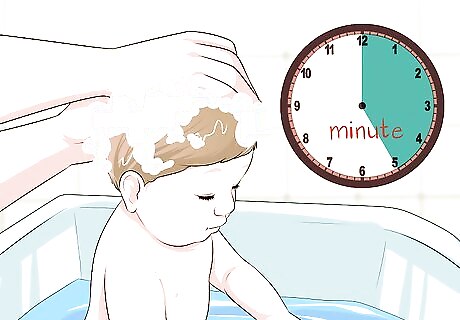
Keep the baths short. Some babies will greatly enjoy bath time. Feel free to hold your baby in the warm water for a few minutes following their bath if they seem to be enjoying it. However, don’t keep your baby in bath water for more than five minutes or so. The water will cool and risk chilling your child. Some babies will cry during baths. If the water is a safe temperature, there is nothing to worry about. Bathe your baby about three times per week. Avoid bathing your baby too often, as this can lead to dry, uncomfortable skin.

Never leave your baby in water. Never leave the baby in the bath, even momentarily. If you must go to another room or get the door, carefully wrap your baby in a towel and bring them with you.
Choosing a Baby Bath Tub
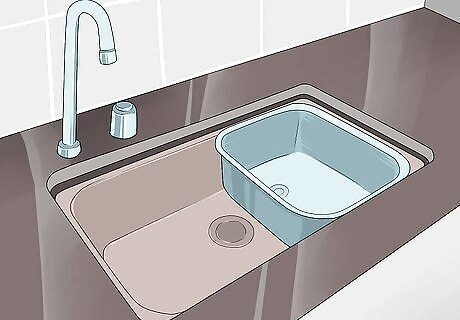
Use a sink insert. It used to be quite common for people to bathe their babies directly in a sink. Baths designed especially for babies, however, increase your baby’s safety, and many fit right into your sink. Choose a flexible rubber mold that will fit the sink in which you plan to bath your baby. When bathing a baby in a sink, make sure you can sit or stand comfortably at a height that allows you to hold the baby securely and be careful that the faucet is not in the way or could injure the baby.
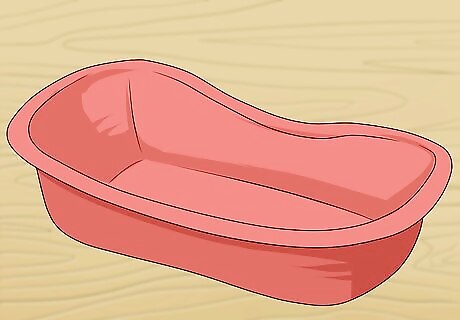
Get a baby basin tub. You may want to consider getting a standalone bathtubs designed for bathing babies. These can placed within a bathtub, on the ground, or on a counter or table. The benefit of these tubs is that they are larger, and your baby will not outgrow it as quickly as they will outgrow a sink insert. Baby basins are a great option, as they allow you to bathe your baby where you feel most comfortable. These tubs cost between $20 and $70 and are available online or from stores such as Babies'R'Us.
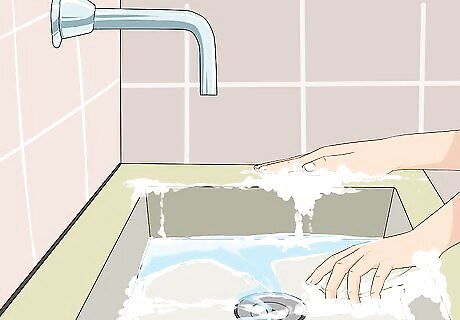
Line your sink to improve safety. The most important criteria in choosing where to bathe your baby is safety. To improve the safety of a sink, clean it thoroughly with soap and water and then rinse the sink completely. Further, line the sink with rubber, or even a thick towel. This will provide cushion and provide a less slippery surface.




















Comments
0 comment